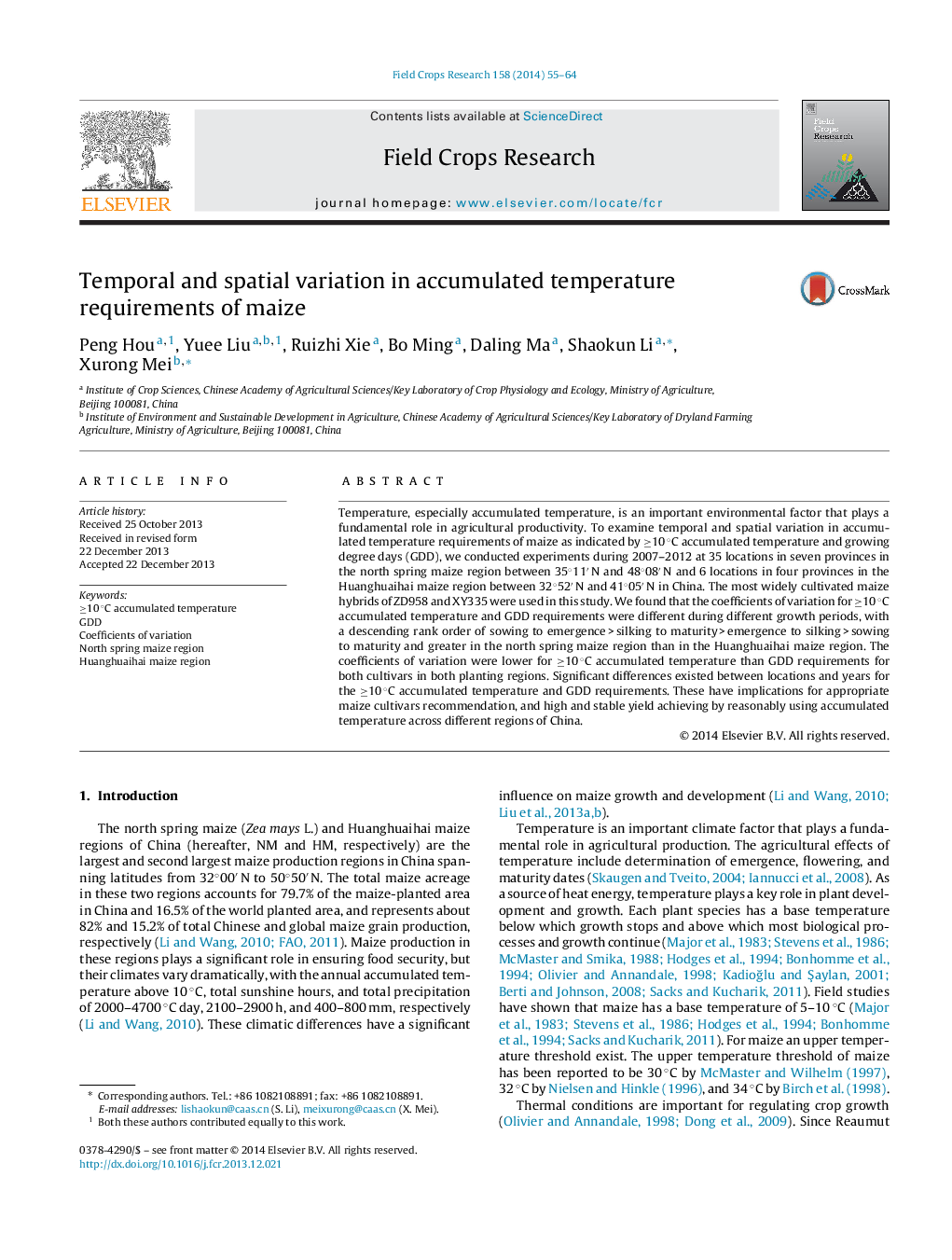| Article ID | Journal | Published Year | Pages | File Type |
|---|---|---|---|---|
| 4510140 | Field Crops Research | 2014 | 10 Pages |
Abstract
Temperature, especially accumulated temperature, is an important environmental factor that plays a fundamental role in agricultural productivity. To examine temporal and spatial variation in accumulated temperature requirements of maize as indicated by â¥10 °C accumulated temperature and growing degree days (GDD), we conducted experiments during 2007-2012 at 35 locations in seven provinces in the north spring maize region between 35°11â²Â N and 48°08â²Â N and 6 locations in four provinces in the Huanghuaihai maize region between 32°52â²Â N and 41°05â²Â N in China. The most widely cultivated maize hybrids of ZD958 and XY335 were used in this study. We found that the coefficients of variation for â¥10 °C accumulated temperature and GDD requirements were different during different growth periods, with a descending rank order of sowing to emergence > silking to maturity > emergence to silking > sowing to maturity and greater in the north spring maize region than in the Huanghuaihai maize region. The coefficients of variation were lower for â¥10 °C accumulated temperature than GDD requirements for both cultivars in both planting regions. Significant differences existed between locations and years for the â¥10 °C accumulated temperature and GDD requirements. These have implications for appropriate maize cultivars recommendation, and high and stable yield achieving by reasonably using accumulated temperature across different regions of China.
Keywords
Related Topics
Life Sciences
Agricultural and Biological Sciences
Agronomy and Crop Science
Authors
Peng Hou, Yuee Liu, Ruizhi Xie, Bo Ming, Daling Ma, Shaokun Li, Xurong Mei,
